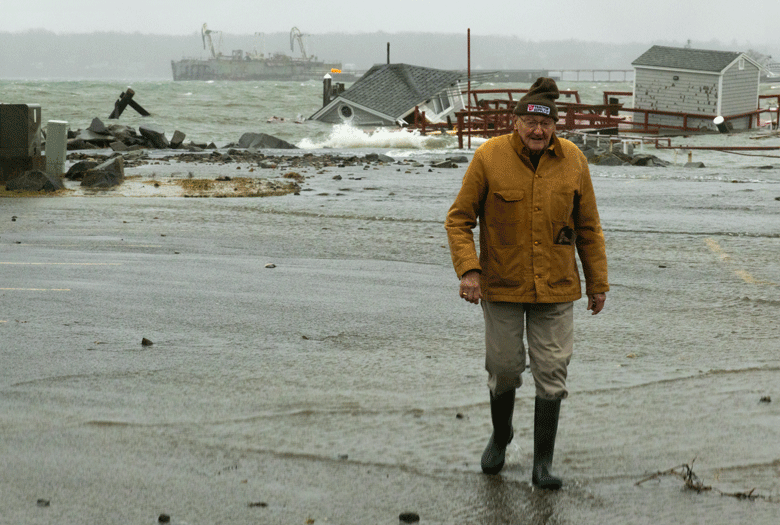The challenges of maintaining working waterfront access was the topic of a discussion at the Maine Fishermen’s Forum on March 2, scheduled well before the January storms that pummeled the Maine coast. And that was appropriate, given the shrinking footprint the marine economy faces.
But a panel discussion on the matter took on a decidedly urgent and dire tone, as those close to the issue described how storm damage may have reversed efforts to preserve these critical properties.
The discussion began on a positive note with Department of Marine Resources Commissioner Patrick Keliher, who serves on the Land For Maine’s Future board, reporting that “a fairly significant” number of conservation covenants have been placed on working waterfront properties, thereby protecting them for marine use. An application deadline for $2.1 million in land protection funds had just closed, he added.
“We’re going to see a second wave from these storms,” she said, as access narrows.
Keliher described taking a helicopter tour of the coast to assess damages and described scenes “like a war zone.” Some areas that looked unchanged from the air actually were where wharfs had been washed away.
Sadly, he said, federal recovery money may not be accessible for private wharves, and FEMA and Economic Development Administration funds also “are not a good fit.”
Keliher reminded those attending to support LD 2225 in the Maine Legislature which, as proposed, would dedicate $20 million to working waterfront recovery work.
Moderator Natalie Springuel of Maine Sea Grant said that “Maine has a long-term commitment to working waterfronts,” noting that the state’s working waterfront coalition became a model for other states.
The panel included Monique Coombs of Maine Coast Fishermen’s Association, who lives in Harpswell and described how that peninsula town was hit by the storms.
Jan. 13 was her birthday, she said, and as she and her husband drove around to survey the damage, “It was completely heart-breaking.” The wharf her family once owned was lost, she said, and it was linked to many family livelihoods.
In May and June, when fishermen begin putting their lobster gear in the water, “We’re going to see a second wave from these storms,” she said, as access narrows.
Emily Farr, who works to support shell fishing in Casco Bay for the Brunswick-based nonprofit Manomet, said the storm left debris or washed out many of the footpaths used to access mudflats. Two-thirds of that access is on private property and was offered on a handshake arrangement, she added, meaning that if property ownership changes, access could be eliminated.
In fact, Farr and others said, private wharves destroyed by the storm could create a wave of waterfront property sales which would convert those sites to residential use. Panelists also noted that those who used those private access points now would go to public sites, creating competition and possibly conflict.
Panelist Tad Miller’s family bought a wharf in Tenants Harbor in 1975, he said, and storm damage to the family wharf was significant.
“I would like to see a grant fund,” to pay for repairs, or a low-interest revolving loand fund.
Panelist Rebecca Rundquist is a founder of Sea Meadow Marine Foundation in Yarmouth, an all-volunteer nonprofit that preserved a marina and working waterfront landing on the Cousins River. The property is used by rowing clubs, small boats, and shellfish growers, she said.
Coastal Enterprises Inc., or CEI, was instrumental in helping the group secure the property. But Rundquist said the issues facing these properties, private or not, are urgent.
“We’re already ten years too late,” she said, and proposed a statewide conference at which working waterfront issues could be discussed.





